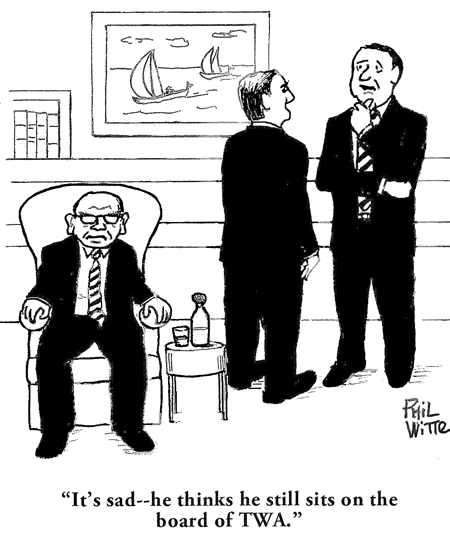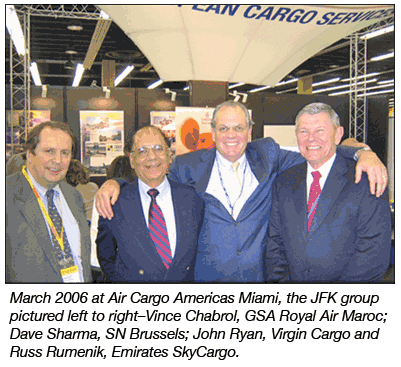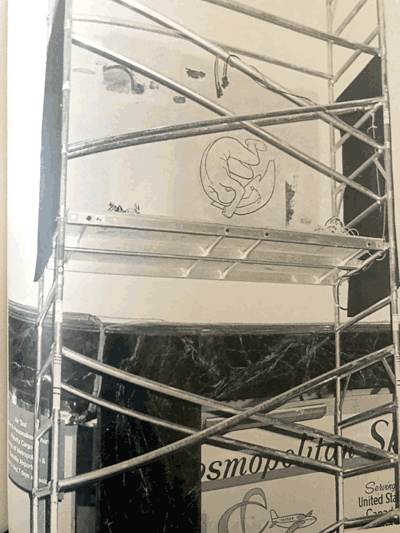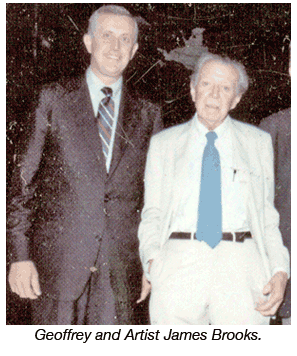
 |
| |
 |
 #INTHEAIREVERYWHERE |
| Vol. 20 No. 44 | Wednesday
November 17,
2021 |
| |
 |
 It was perhaps inevitable that air cargo came back down a bit closer to the ground after the swift and dramatic growth of air freight importance since the start of the pandemic. For a while cargo enjoyed celebrity as the new glamour industry, but now air cargo has attracted an assortment of crystal ball gazers, mostly men whose official positions presumably endow them with the rare gift of prediction. Personally I prefer to maintain a relative sobriety. For Roman Augurs and Haruspices, the relationship with the gods was fundamental. Before undertaking any activity (public or private) consulting gods’ wish and consent was considered normal and prudent. The signs through which the gods manifested their will were many. Divination was precisely the art of interpreting these signs. The oldest divination method was the observation of the flight of birds, as was practiced by the augurs, who interpreted their appearance, flight and disappearance as a precise language expressing the “auspicia”, i.e. the odds concerning a certain activity. For our own purposes we shall limit ourselves to this kind of fortune telling, without entering the more audacious environment of haruspicine innards gazing. So let us stick to flying and interpreting the signs of what flies through the sky. In our case birds will not be mentioned, but we know all too well that birds are not the only customers of the sky. Clearly Icarus is the mythical incarnation of man’s dream of flying high above the land where he was supposed to be stuck. This is precisely the archetype which floats in the mind of each and every aviation professional. Hence, other than flying your own body, flying passengers seems to be the natural goal of homo volatilis. Other than for magicians, such as Harry Potter, flying objects rather than humans have never been so powerfully awesome. In our dreams we dream about flying ourselves, hardly about making cartons and pallets fly. Yet, air cargo has made our life possible and even enjoyable in the last 100 years. Mostly overlooked, the air cargo business has made globalization possible, allowed millions, if not billions, to emerge from poverty by connecting the four corners of the earth in trade. Air cargo has also made it possible for humanity to narrowly escape from one of its greatest challenges in recent time, in hopes the worst is over by now . . . Getting back on our trail, the early flush of the industry's impressive advances with vaccines and other deliverables gave expectations, still riding high in some quarters. Passengers were stuck at home, no chance or intention to move. Surely no desire to book a cheap haul, packed in the cabin like canned sardines. Out of its closet, there came the air cargo super hero, who blew away the mothballs from rows of parked aircraft with a single breath, when the rest of the airline fleet was grounded. The deliverables in air cargo pumping traffic just as all else was failing, with ports blocked and ocean rates through the roof, truck drivers and dock workers few and far between, when everything was coming to a standstill. In a way our only hope for many months was the cargo hero. After all everything that flies can carry cargo and in the mad rush the queue to convert aircraft into freighters was the call of the moment. We all saw the photos of cartons comfortably seated in the cabin . . . So why shouldn’t some well-regarded personality emboldened by air cargo growth rates and statistics get all of us swept up in the tide of spreading enthusiasm, whilst projecting a phenomenal tomorrow for airfreight? That is when the augurs come into action: computer says no . . . Today where passenger seats have had cargo strapped to them for the past 18 months, those cabins are being dusted off and the coffee makers are being plugged back in for the return of the passengers and the reawakening of action on the ground, as once again the bars and lounges are open throughout the airports. As November unfolds, several of those A380s everybody was calling goners a couple months ago are creeping back into airline schedules at air cargo leaders like Qatar Airways and Singapore Airlines and elsewhere. And so we wonder about the soothsayers of air cargo’s splendid future. In addition to perhaps giving good sooth, truth be told otherwise, most of these people probably don't really know what's going to happen. Neither do we . . . this being said, we take a guess: cargo will not be treated as its intrinsic value suggests. 2020 was probably just a flash in the pan and the uphill struggle of air cargo to get on “Board” may not be quite finished as yet. Just like industry watchers of the past, e.g. in 1948, when Berlin Airlift saved a city of two million during the Soviet blockade, most air cargo people only guessing and hoping for the best will not be lifted to the front of the stage any more this year. If all we can talk about in air cargo is digitalization, continuing the conversation in 2022 like we have not been talking about the air cargo paperwork jungle for forty years, perhaps we are missing the point. Somebody should understand that cargo does not have legs and digitizing cargo will not give it legs to run with. You need a real cooperative effort to lift the goods to the sky, or magic? Also lately there have been a lot of success stories with graphics of big wide toothpaste grins shining out from cargo executives’ faces portraying their success, but you look at all these grand pictures and read the text and imagine that something has changed: cargo people at the airlines are elevated to positions of respect as a recognized key to the fortunes of their respective companies. Air cargo today, to hear some people talk about it in some quarters, can be described as brimming with the success of the past year and a half, but it’s all too beautiful to be true, dear. Step back. Take a deep breath. Do you realize we've heard this song before. We heard it in 1948, we heard it in 1973, and many other times, in particular when the Suez Canal was blocked for one reason or another. And now we're hearing it again in 2021. Don't get us wrong: we're a hundred percent positive for air cargo, but we remember that history is also the great teacher: Icarus will come again to our airline minds, fly so high, so close to the sun to make it impossible to see the next passenger crisis. Somebody in 1952 asked C.R. Smith, founder of American Airlines what would happen with air cargo. Smith had been an officer serving in the Air Transport Command (ATC) watching the military during World War II. Smith predicted that 10 years from 1952, maybe one third of American Airlines business would be in cargo. That was not an achievable prediction, but it did give a lot of cheer to the entire air cargo community. Well, in 1952 the augurs looking at how airplanes were flying were still thinking passengers would grow faster, so there you go. Fast forward to 2021 and once again we see a lot of that sky-high enthusiasm going on right now. But we askedWillie Walsh, the DG of IATA for some nuts and bolts specifics like “will top cargo people be added to the IATA Board?” and his response, while not clearly “get lost”, was not very enlightening. Since IATA is the association serving the airlines, we can assume the position of the airlines is by and large endorsed here. IATA’s augurs do not advance air cargo apparently. No wonder anyone who has ambition and expectations in flying, sooner or later decides to take a nose dive into other areas of the airline business, at times even into other areas, period. Most distressing is to witness almost a mass exodus of vital key air cargo staff from the ranks of carriers, even though air cargo was carrying the water for these companies during the last 18 months. Does that make any sense? The answer we think is cutting staff in pieces: if you are always thinking passenger, your mentality will always result in good people of air cargo being swept away. I guess thinking about these things what concerns me most feels like the loss of great expectations: the apparent short sightedness going on here right now. We are losing lots of key people in air cargo positions throughout the industry, whilst business booms. Where are the engineers of air cargo who are primed and ready to spring into future action with ideas that would allow an even greater future for air cargo? Throughout my nearly 50 years on this beat, I have seen the loss of great inventive companies (with brilliant core people) like German Air Cargo, Seaboard World, Flying Tigers Line for various reasons, so what is happening today is not all that new, but when I think of all the great people in air cargo, the futurists and the achievers over the years and where we might be today and could be tomorrow, if . . . my hope is we will not have to look back on this time thinking once again: “You don’t know what you’ve got until you lose it!” Get them on Board! Geoffrey |
 |
 The old saying “you can take the boy out of the country, but you cannot take the country out of the boy”, also comes to mind. Looking at this picture of Prakash Nair and Rohan Prakash Nair, father and son out for a day on the ramp whilst attending The Dubai Air Show this week recalls the day when an airline from the Middle East set the world on fire with excitement and expectation. Prakash wrote the book on original, innovative results-driven air cargo marketing, that helped elevate the Emirates SkyCargo global brand during the formative years. Together with Ram Menen and their teams, both saw their dream of a powerhouse Middle East carrier become a worldwide phenomenon. Today happily retired for some years now in Dubai, Prakash and Anita Nair have watched their son Rohan follow his Dad in the business where he today serves at Lufthansa Technik as a Key Account Manager, based in Dubai. |
Vyas Dev “Dave” Sharma, a quiet spoken dignified air cargo builder from the pioneering modern era of the late 1960s died November 9 in Long Island, New York at age 86. Dave leaves Suda, his wife of 52 years, his daughter Ritu Bala; his sons Rakesh and Rohin (both of whom served as U.S. Army officers); son-in-law Gregory; daughters-in-law Kara and Shannon; and seven grandchildren. Dave was born in Burma, one of 6 children. The Sharma’s escaped from Burma during the Japanese invasion in World War II, relocating to Northern India. In 1958 he moved to England where he began his storied career in the airline industry with British Airways. In 1962, he came to New York City. Dave continued his airline carrier at TWA at the carrier’s headquarters in 1964 as senior analyst in sales forecasting. A fixture at JFK Airport for over forty years, Dave made his mark forever at Sabena Belgian World Airlines Cargo (now Brussels Airlines). Dave was best known in air cargo as a creative problem solver and astute businessman, but most importantly a kindhearted professional, who was always a calming influence, willing to help colleagues and complete strangers. Dave’s efforts in air cargo particularly came to the fore after developing Sabena’s relationships in Africa during the 1994 Rwandan conflict where he was a critical team member in the humanitarian relief effort. Later Dave was recognized for his effort by both Liberia and Rwanda. He was a class act all the way and always a futurist. I recall a conversation we had over a decade ago that rings especially true today as the world turns. Dave was all in pushing back and pumping air cargo traffic for Sabena (SN). ”We are twenty people in air cargo for the airline and 16% of our revenue comes out of Africa. “I don’t know why others aren’t putting more focus on Africa. “While cargo going into Africa is no match for cargo coming out of Africa, the area is coming up in much the same way China once was.”  Perhaps the greatest testimony to Dave Sharma
was the truly heartfelt writings of the JFK Air Cargo Association at Dave’s
passing.
Perhaps the greatest testimony to Dave Sharma
was the truly heartfelt writings of the JFK Air Cargo Association at Dave’s
passing.Dave was a member of a very elite generation of air cargo executives that were present at the creation of modern air cargo. But that was a long time ago. Many of the air cargo luminaries of that time, when JFK handled more than 60% of all the air cargo entering and exiting USA, went on to great fame elsewhere. Today less than a handful are still with us. That Dave impacted active people in our business right up until his passing and is recognized by today’s generation of air cargo people in New York is truly unique of anybody that ever worked the line at JFK. Dave made all of us in air cargo look good. God bless you Dave and happy landings always. Geoffrey |
|
|
In 1952 at the height of the McCarthy anti-communist witch hunts that adversely impacted the arts, especially the movie makers and muralists of the Roosevelt Administration, at LaGuardia Airport’s Marine Air Terminal, a giant 237and a half foot circular and 12 foot tall mural titled “Flight” was thought to have communist overtones and was painted over in drab gray wall paint by the Port Authority of New York & New Jersey. Whilst out delivering our newspaper Air Cargo News in 1978 we came upon the MAT and the story of the mural and found the artist James Brooks, who assured us every art big shot had tried and failed to bring back his giant mural, which he had created on Belgian linen over a two-year period from1940-1942  When
Air Cargo News (our monthly industry newspaper, the original since 1975)
saved the mural Flight at LaGuardia and had the Marine Air Terminal
designated a landmark in 1980, the restorers uncovered the first image from
under nearly 30 years of wall paint; it was a tiny portion of Icarus tumbling,
having flown too close to the sun. When
Air Cargo News (our monthly industry newspaper, the original since 1975)
saved the mural Flight at LaGuardia and had the Marine Air Terminal
designated a landmark in 1980, the restorers uncovered the first image from
under nearly 30 years of wall paint; it was a tiny portion of Icarus tumbling,
having flown too close to the sun.The men who restored the mural sat over a weekend in my office, smoking dope and must have been higher than the flag on July 4th as they worked. I stood there in the lobby looking up in wonder alongside the artist Jim Brooks who had thought he would never see the mural again. Jim hobnobbed with all the titled swells in the Hamptons on Long Island, home of the rich and famous. He drank with and later delivered eulogies for fellow1930s artists that lived in the Hamptons, including Jackson Pollack and others. None of The New York Times chi chi la la crowd could figure out how to save his mural, to bring it back to life. Then we came along, and we not only saved his mural but also had The Marine Air Terminal LaGuardia declared a historic landmark. Today, despite the $8 billion dollar concrete and glass monstrosity of an airport being built all around at LaGuardia, the Port Authority cannot lay a glove on The Marine Air Terminal, although Lord knows they try.  Jim was absolutely over the moon when his
abstract art back was brought back to life during the 1980s. The sign he
had hand lettered in 1942 explaining his mural and hung on the walls of
MAT was returned to its original place of pride.
Jim was absolutely over the moon when his
abstract art back was brought back to life during the 1980s. The sign he
had hand lettered in 1942 explaining his mural and hung on the walls of
MAT was returned to its original place of pride.I made a photo copy as the sign still hangs in the building today. We were close friends for years and when he died I sat on the edge of his bed in his house in The Springs in the Hamptons and cried so they left me alone in his room for some hours. The view of that little spot in the giant mural that came back first, the Icarus pictured here is never forgot for the thrill of the moment and the promise it indicated. Today we refer to Icarus in our story presented here above. Nice to see old Icarus again in our media. Since there are no coincidences, it’s even nicer that you, dear readers, who are such kindred spirits in our lives can share this moment with us. Sabiha/Geoffrey |
 |
If
You Missed Any Of The Previous 3 Issues Of FlyingTypers Access complete issue by clicking on issue icon or Access specific articles by clicking on article title |
||
 Vol. 20 No. 41 Peter Hansen Pulled Air Cargo Up Sullivan's Travels Chuckles for October 20, 2021 Inside Moves At Qatar Cargo On The Freight-Pay Beam Sorting Cargo In A Gutter Near You 'Tis Autumn In New York |
|
|
Publisher-Geoffrey Arend
• Managing Editor-Flossie Arend • Editor Emeritus-Richard
Malkin Film Editor-Ralph Arend • Special Assignments-Sabiha Arend, Emily Arend |
Send comments and news to geoffrey@aircargonews.com
|